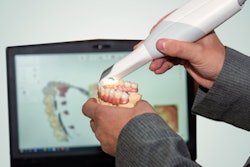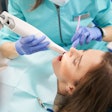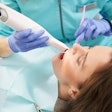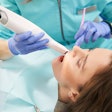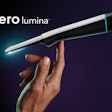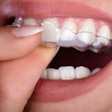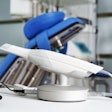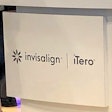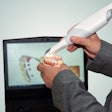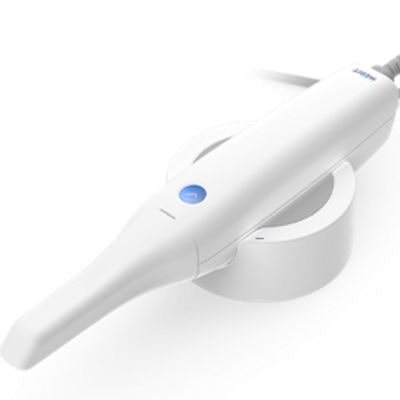
I recently interviewed Mark T. Murphy, DDS, about his experience with an intraoral scanner in his practice. A diplomate of the American Board of Dental Sleep Medicine (ABDSM), Dr. Murphy uses the scanner exclusively to scan lower and upper arches for sleep appliances. Extremely precise scans are required to ensure proper fit and function of the retainer-like devices worn by patients while they sleep.
Q: As an ABDSM diplomate, is your use of the scanner related to dental sleep medicine (DSM), in order to scan arches for sleep appliances and other DSM-related applications?
 Mark T. Murphy, DDS.
Mark T. Murphy, DDS.A: Yes, I only do dental sleep medicine, and the interarch accuracy of each scan is critical for full-mouth impressions and bite relationships. Single-tooth impressions and quadrant or sextant models do not require the same precision as full upper and lower arch scans. The retainer-like adaptation of the sleep devices makes the fit more important, especially because I use mostly ProSomnus devices, which are designed and precision-milled using CAD/CAM and control-cured polymethyl methacrylate (PMMA). This results in no tooth movement, and that prevents one of the most important side effects.
Q: How does the intraoral scanner help to address infection control issues, especially now due to the ramifications of the coronavirus pandemic?
A: Who knew that would become so important so suddenly? The first bit of good news is that in DSM, there is little to no production of aerosols, so our risk of airborne pathogen transmission is much less. It is minimized to near zero with scanning, and because transmission of the scan is done electronically, rather than with a physical impression. There are no disinfection steps, packaging or shipping, and duplication of these procedures necessary at the lab. Digital intraoral scanning makes the process clean and simple.
Q: In what ways does this scanner make good business sense for dentists who want to get started with chairside digital impressions, from a financial aspect as well as from a workflow aspect?
A: Polyvinyl siloxane is expensive, period. Take two full arch impressions and it is even more expensive. You can recoup the total cost of the scanner or offset payments in a general dental office or a busy DSM practice very quickly, and that is not even considering the time savings. You save time taking impressions -- no disinfecting or packaging. Also, the case arrives at the lab "instantly" via the internet, and there are almost always fewer remakes.
It is even more convenient and economical for me because I share office space with a general dentist and share the scanner as well. We use the i500 intraoral scanner manufactured by Medit, a global provider of 3D measurement solutions for dental clinics and laboratories. The scanner is portable, and we each have separate Medit Link accounts to readily keep track of our individual scans.
 Medit's i500 intraoral scanner. Image courtesy of Medit.
Medit's i500 intraoral scanner. Image courtesy of Medit.Q: From a patient-centric standpoint, what are the benefits of the scanner?
A: That's an easy question to answer. No goop, no gagging, a very clean process, and no bad impression material taste or mouthfuls of gunky polyvinyl siloxane. Patients wonder why we didn't do this years ago. The visual imagery of the digital scan is a great communication tool. They say that 65% of people are visual learners, so enough said! Show patients a picture, and they think it is worth a thousand words. Sometimes patients agree to the treatment because of the image alone, with no explanation, features, advantages, or benefits discussed at all. Generally speaking, we may be great clinicians, but at times we are not great talkers.
Q: Is there anything you would like to add about the business-related aspects of an intraoral scanner that dentists should know?
A: Today, patients should not have to tolerate goopy impressions, and we should not have to risk the potential errors and inaccuracies of analog techniques. Studies have demonstrated the unmatched precision of digital impressions. As a DSM provider doing full arch impressions, my patients would hate having putty and then a wash during a two-stage technique. We did it in the past and could do it again tomorrow if we had to, but, fortunately, we have evolved and so has technology. DSM largely works off referrals from physicians. Because of this, it is important to create a comfortable, high-tech experience for the patient. We want the patient to tell the sleep physician that the experience was fabulous, so we can earn more referrals. Intraoral scanning can help create this experience.
Consumers expect digital versions of who and what we are. From the scheduling, confirmation, diagnostic radiographs, charting, procedures, and follow-up, much of dentistry has gone digital and will continue to do so.
Mark T. Murphy, DDS, practices dental sleep medicine part time in Rochester, MI, and is the principal of Funktional Consulting, lead faculty for clinical education at ProSomnus Sleep Technologies, serves on the guest faculty at the University of Detroit Mercy School of Dentistry, and is a regular presenter at the Pankey Institute.
Joe Maida is a 20-year clinical and technical writing veteran with a focus on all things dental. When he was young, his father told him, "Be true to your teeth and they'll never be false to you." He applies that wisdom to everything he does.
The comments and observations expressed herein do not necessarily reflect the opinions of DrBicuspid.com, nor should they be construed as an endorsement or admonishment of any particular idea, vendor, or organization.





